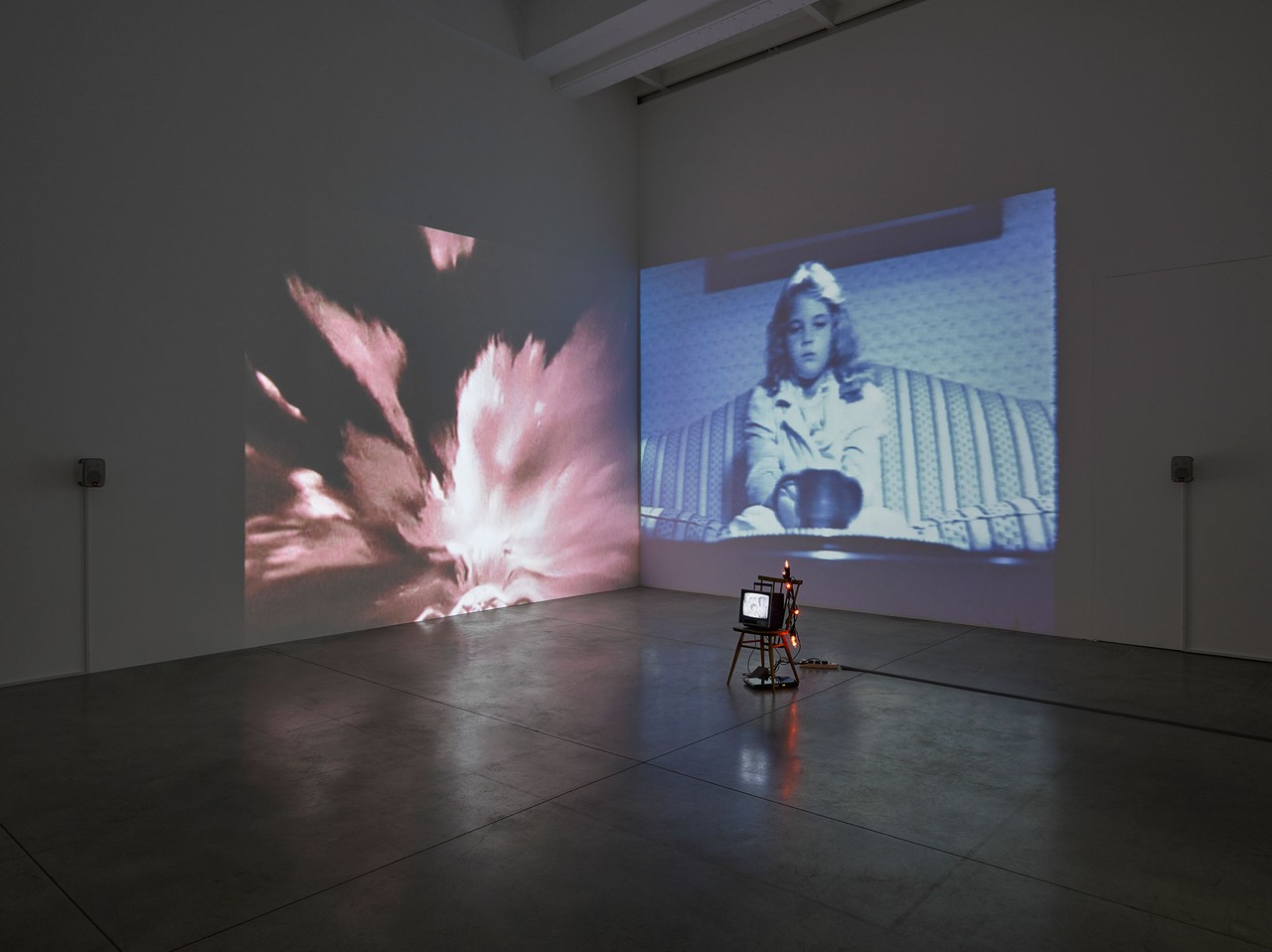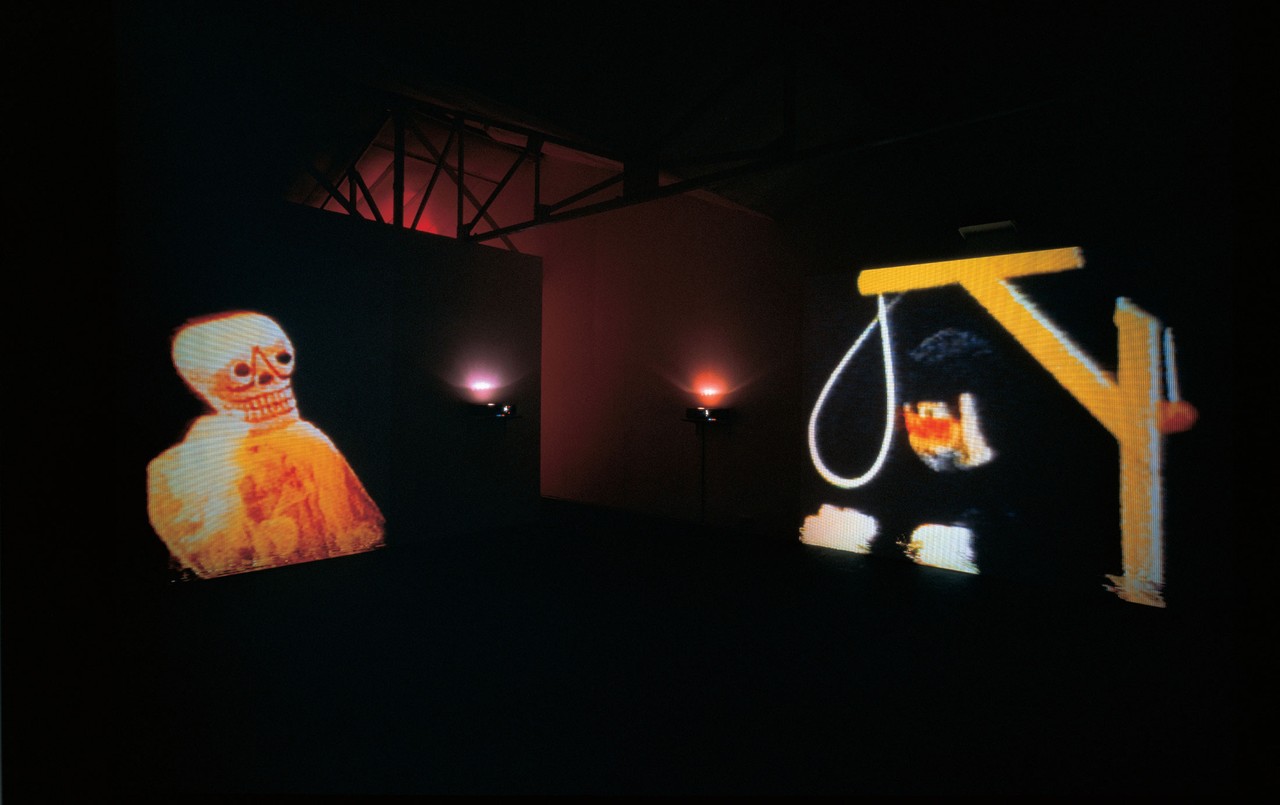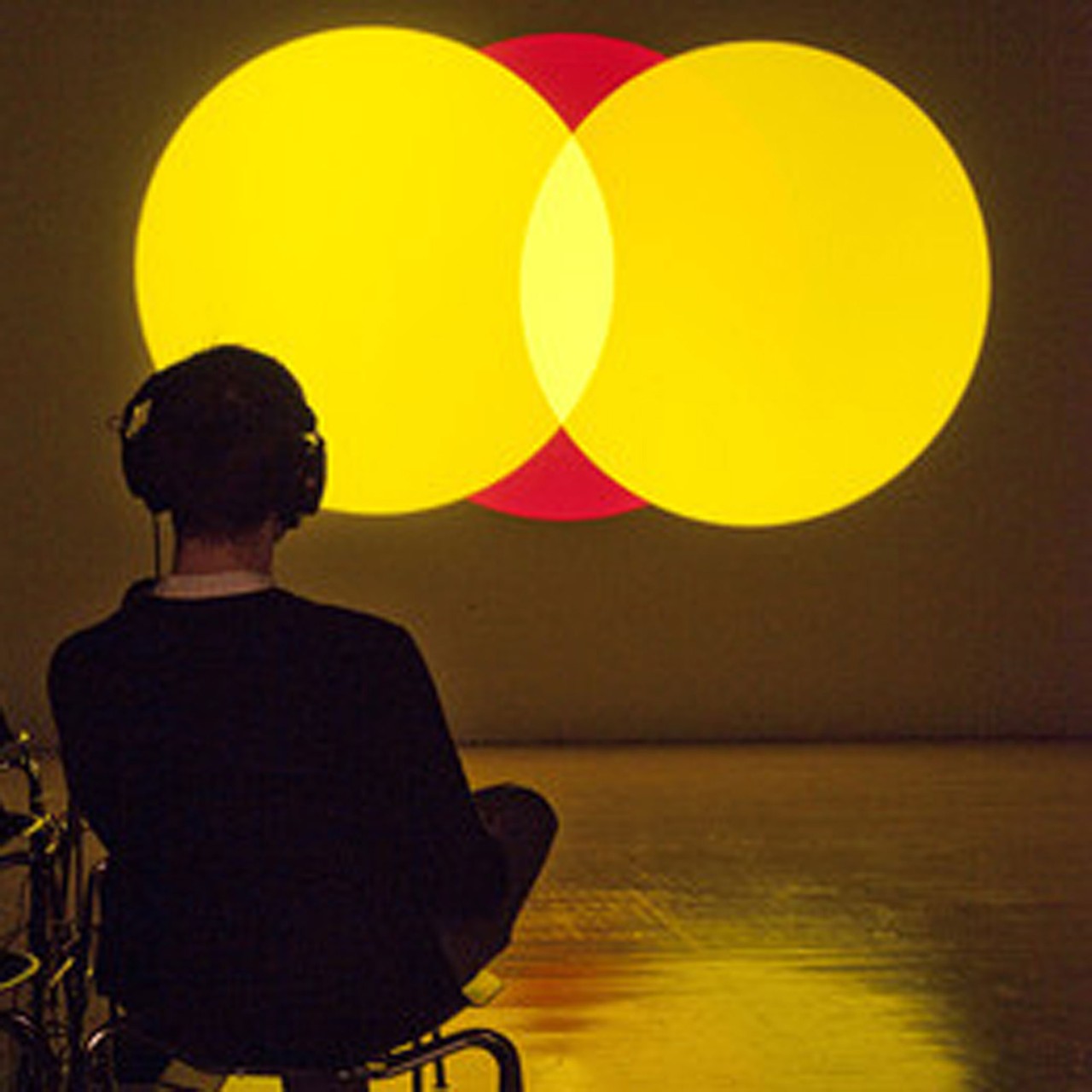Susan Hiller
Lost and Found
14 Oct 2016 - 04 Jun 2017

Susan Hiller
Still from Lost and Found, 2016
Video, sound. Running time 30 minutes.
Courtesy the artist and Lisson Gallery, London.
Still from Lost and Found, 2016
Video, sound. Running time 30 minutes.
Courtesy the artist and Lisson Gallery, London.

Susan Hiller
Psi Girls, 1999
Five channel video projection, with sound, 15 min. Dimensions variable.
© Susan Hiller. Courtesy Lisson Gallery.
Psi Girls, 1999
Five channel video projection, with sound, 15 min. Dimensions variable.
© Susan Hiller. Courtesy Lisson Gallery.

Susan Hiller
Wild Talents, 1997
Video installation: two channel video projection, with sound, one black-and-white video, monitor, chair, and votive lights. Dimensions variable.
© Susan Hiller. Courtesy Lisson Gallery
Wild Talents, 1997
Video installation: two channel video projection, with sound, one black-and-white video, monitor, chair, and votive lights. Dimensions variable.
© Susan Hiller. Courtesy Lisson Gallery

Susan Hiller
Die Gedanken sind frei, 2012
Interactive audio installation: 102 songs on customized jukebox, with wall texts, books, benches, etc. Dimensions variable.
© Susan Hiller. Courtesy Lisson Gallery.
Die Gedanken sind frei, 2012
Interactive audio installation: 102 songs on customized jukebox, with wall texts, books, benches, etc. Dimensions variable.
© Susan Hiller. Courtesy Lisson Gallery.

Susan Hiller
An Entertainment, 1990
Four channel video projection, with sound, 25 min., 59 sec. Dimensions variable.
© Susan Hiller. Courtesy Lisson Gallery.
An Entertainment, 1990
Four channel video projection, with sound, 25 min., 59 sec. Dimensions variable.
© Susan Hiller. Courtesy Lisson Gallery.

Susan Hiller
Magic Lantern, 1987
Three channel, 35 mm slide projection, with sound, 12 min.
© Susan Hiller. Courtesy Lisson Gallery.
Magic Lantern, 1987
Three channel, 35 mm slide projection, with sound, 12 min.
© Susan Hiller. Courtesy Lisson Gallery.
SUSAN HILLER
Lost and Found
14 October 2016 – 4 June 2017
Susan Hiller (b. 1940, Tallahassee, FL; lives in London) is an influential pioneer of multimedia installation art recognized for her early adoption of video as an artistic medium and for her ability to transform conventional gallery spaces into haunting, immersive environments. Hiller combines the archival tendencies of conceptual art with an emphasis on psychologically charged subjects, from war memorials to paranormal phenomena. Commissioned by Pérez Art Museum Miami and making its debut in this exhibition, Hiller’s video Lost and Found features an audio collage of voices speaking in 23 different languages, including Aramaic, Comanche, Livonian and other extinct or endangered idioms. Many of the anecdotes, songs, arguments, memories, and conversations that the voices relay revolve around the theme of language itself. Translations of these utterances appear in the form of subtitles, which provide an entry point into the narrators’ diverse cultural circumstances. A constantly shifting oscilloscopic line gives visual form to the work’s soundtrack, suggesting the poignant idea that individuals separated by time, geography, and worldview remain linked by the physical experience of sound as it resonates through the human body during verbal communication.
Hiller was born in 1940 and lived in and around Cleveland, Ohio before her family moved to South Florida in 1952. She attended Ponce de Leon Junior High School and Coral Gables High School. In 1961 she received a BA from Smith College in Northampton, Massachusetts and then spent a year in New York studying photography at The Cooper Union and linguistics at Hunter College before receiving a National Science Foundation Fellowship to study for a Ph.D. in Anthropology at Tulane University in New Orleans. In 1965 she decided to become a professional artist and with her partner, writer David Coxhead, moved to London where she is still based. Hiller's work is considered to be an important influence on younger British artists.
Major retrospectives of Hiller's work have been organized by the Institute for Contemporary Art, London and Tate Britain, London. Other solo exhibitions have been presented at venues including The Jewish Museum, New York; Generali Foundation, Vienna; Castello di Rivoli, Turin; Wexner Center for the Arts, Columbus; Museo Serralves, Porto, Portugal; Freud Museum, London; Institute of Contemporary Art, Philadelphia; and Serpentine Gallery, London, among others. Hiller is a recipient of numerous prestigious awards including the Guggenheim Fellowship in Visual Art Practice, the Gulbenkian Foundation Visual Arts Award and the Berlin DAAD Fellowship. Her work is in numerous major museum collections.
Lost and Found
14 October 2016 – 4 June 2017
Susan Hiller (b. 1940, Tallahassee, FL; lives in London) is an influential pioneer of multimedia installation art recognized for her early adoption of video as an artistic medium and for her ability to transform conventional gallery spaces into haunting, immersive environments. Hiller combines the archival tendencies of conceptual art with an emphasis on psychologically charged subjects, from war memorials to paranormal phenomena. Commissioned by Pérez Art Museum Miami and making its debut in this exhibition, Hiller’s video Lost and Found features an audio collage of voices speaking in 23 different languages, including Aramaic, Comanche, Livonian and other extinct or endangered idioms. Many of the anecdotes, songs, arguments, memories, and conversations that the voices relay revolve around the theme of language itself. Translations of these utterances appear in the form of subtitles, which provide an entry point into the narrators’ diverse cultural circumstances. A constantly shifting oscilloscopic line gives visual form to the work’s soundtrack, suggesting the poignant idea that individuals separated by time, geography, and worldview remain linked by the physical experience of sound as it resonates through the human body during verbal communication.
Hiller was born in 1940 and lived in and around Cleveland, Ohio before her family moved to South Florida in 1952. She attended Ponce de Leon Junior High School and Coral Gables High School. In 1961 she received a BA from Smith College in Northampton, Massachusetts and then spent a year in New York studying photography at The Cooper Union and linguistics at Hunter College before receiving a National Science Foundation Fellowship to study for a Ph.D. in Anthropology at Tulane University in New Orleans. In 1965 she decided to become a professional artist and with her partner, writer David Coxhead, moved to London where she is still based. Hiller's work is considered to be an important influence on younger British artists.
Major retrospectives of Hiller's work have been organized by the Institute for Contemporary Art, London and Tate Britain, London. Other solo exhibitions have been presented at venues including The Jewish Museum, New York; Generali Foundation, Vienna; Castello di Rivoli, Turin; Wexner Center for the Arts, Columbus; Museo Serralves, Porto, Portugal; Freud Museum, London; Institute of Contemporary Art, Philadelphia; and Serpentine Gallery, London, among others. Hiller is a recipient of numerous prestigious awards including the Guggenheim Fellowship in Visual Art Practice, the Gulbenkian Foundation Visual Arts Award and the Berlin DAAD Fellowship. Her work is in numerous major museum collections.
